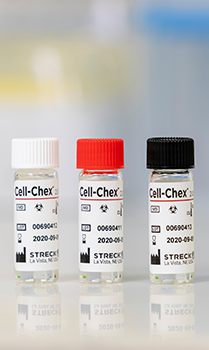You might not think you need a manual body fluid control, but you know that the lab environment can be unpredictable. After all, you are a top-notch professional who likes to be prepared for anything that can happen in your lab.
You can be better prepared if you anticipate some common what ifs that could arise when it comes to body fluid testing.
We are automated and no longer do manual body fluid testing.
But what if:
- You’re paid a visit by your friendly neighborhood CAP inspector. CAP Guidelines mandate a manual backup method for automated systems. In the event of an instrument being down for preventative maintenance or instrument failure, a back-up method would be needed.
- Your body fluid testing requires different handling. Some body fluid samples, such as CSF, may be more viscous and require different procedures than blood specimens, and result in increased maintenance on the instrument.
- You consult CAP Guidelines like the lab leader you are. HEM.35452 – Acceptable Limits – limits the use of automated instruments for cell counting in very low concentrations seen in some body fluid samples. Manual body fluid counts can enumerate cells below the lower limits, requiring a QC Method.
Our body fluid test volumes are too low to need QC.
But what if:
- Once again, your friendly CAP inspector pays your lab an unexpected visit. If you perform this type of testing, even in small volumes, you must have a QC procedure established, according to accreditation guidelines.
- A comprehensive manual body fluid control can also help establish competencies for current Clinical Laboratory Scientists and training for new CLSs.
But what if:
- Your lab has staffing shortages. Double counts and dividing takes time that a short-staffed lab can ill afford.
- Your duplicate counts don’t add up. Double counts can be subjective ̶ it depends on the two individuals running the test.
- You have more important things to do. Using a commercial body fluid QC can free your staff to prioritize other tasks of higher value.
QC for manual body fluid testing is not a regulatory requirement. We have not been cited during an inspection.
But what if:
- You get another visit from the lab inspector — oh my! HEM.35340 – Manual Cell Count Controls – dictates that cell count control is analyzed in duplicate, or a procedural control is used, for each 8-hour shift of patient testing. The right manual body fluid control can eliminate the need for double counts, saving tech time.
- That visiting inspector is a different one than has visited before. Every inspection is different. The next inspector may well find QC for manual body fluid counts is an important factor in determining the competencies of a clinical lab.
Keep Cell-Chex® on hand for your manual body fluids testing!
Cell-Chex is a multi-level manual cerebrospinal and body fluid control for RBC and WBC counts. It is the only body fluid control assayed for the 5-part WBC differential and the only manual body fluid control that contains crystals to aid in crystal identification in synovial fluid samples.



